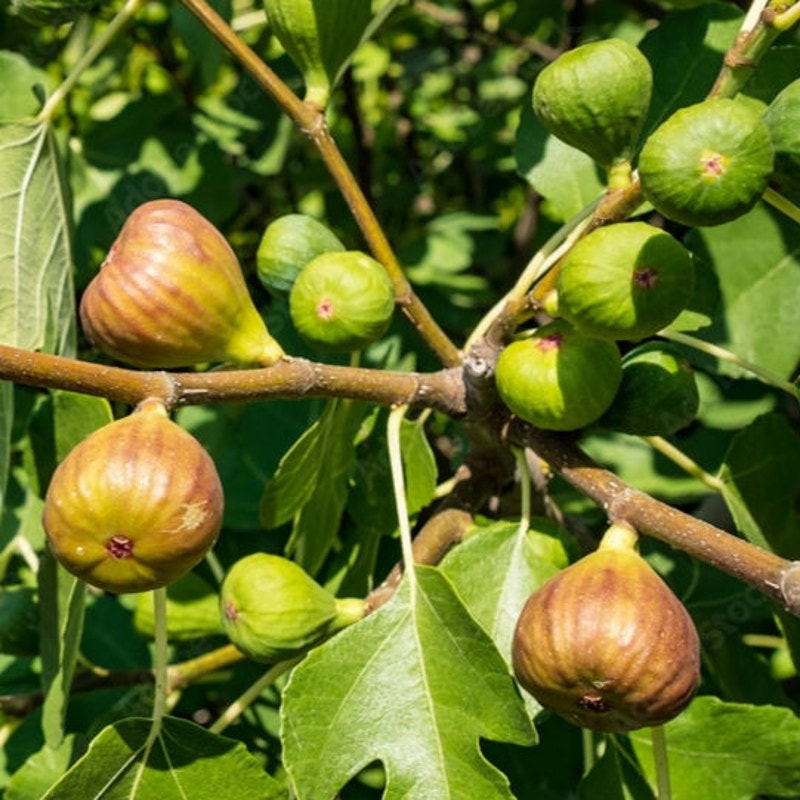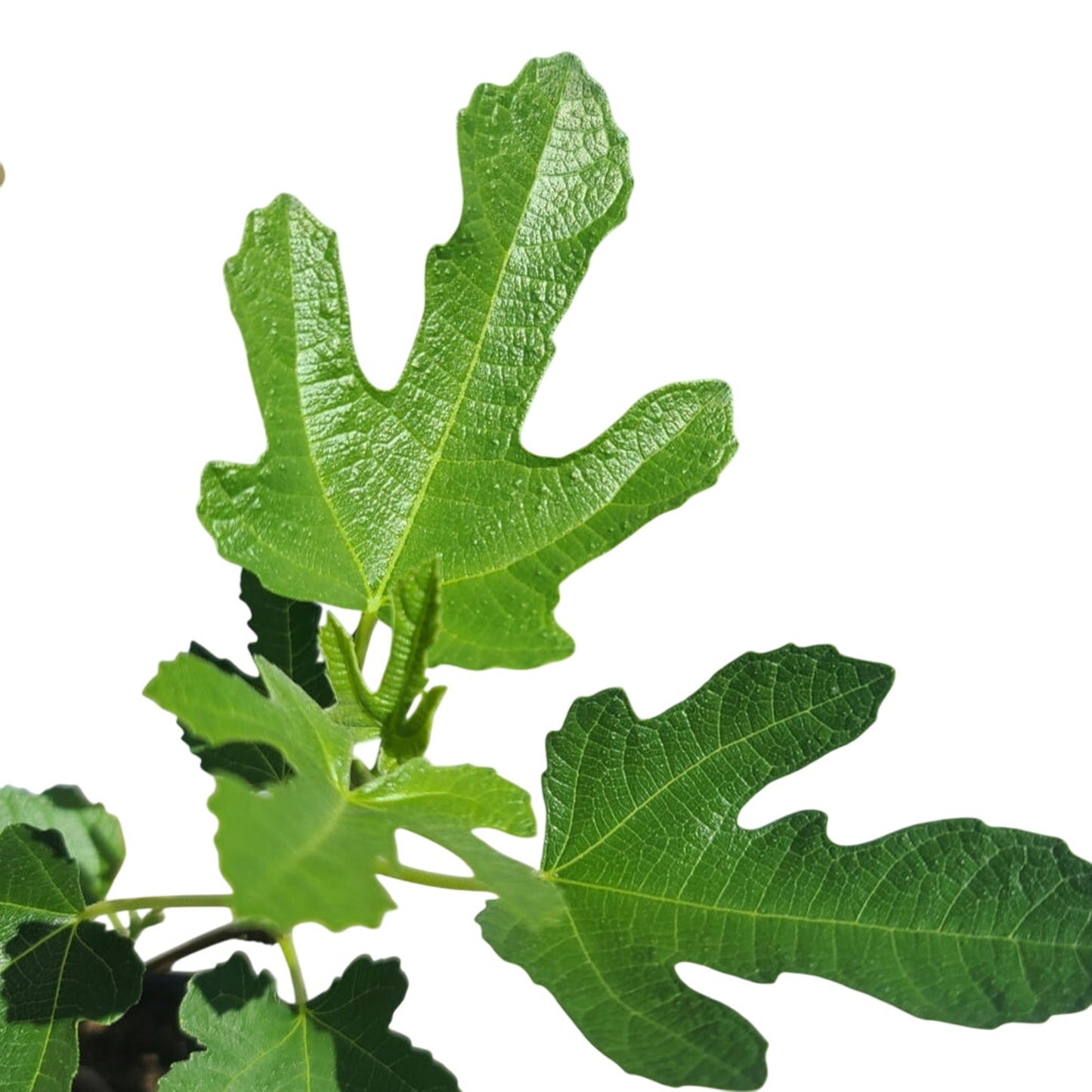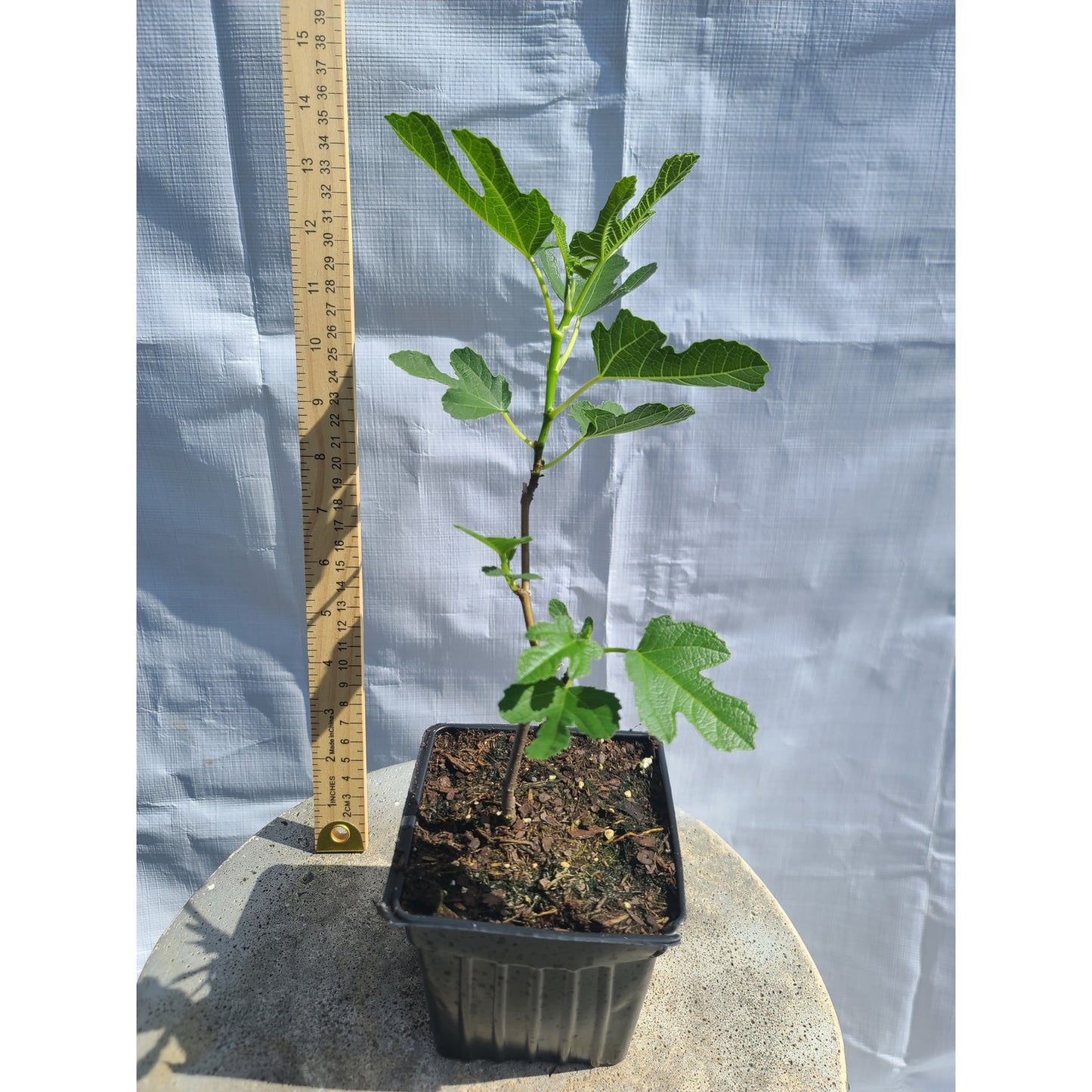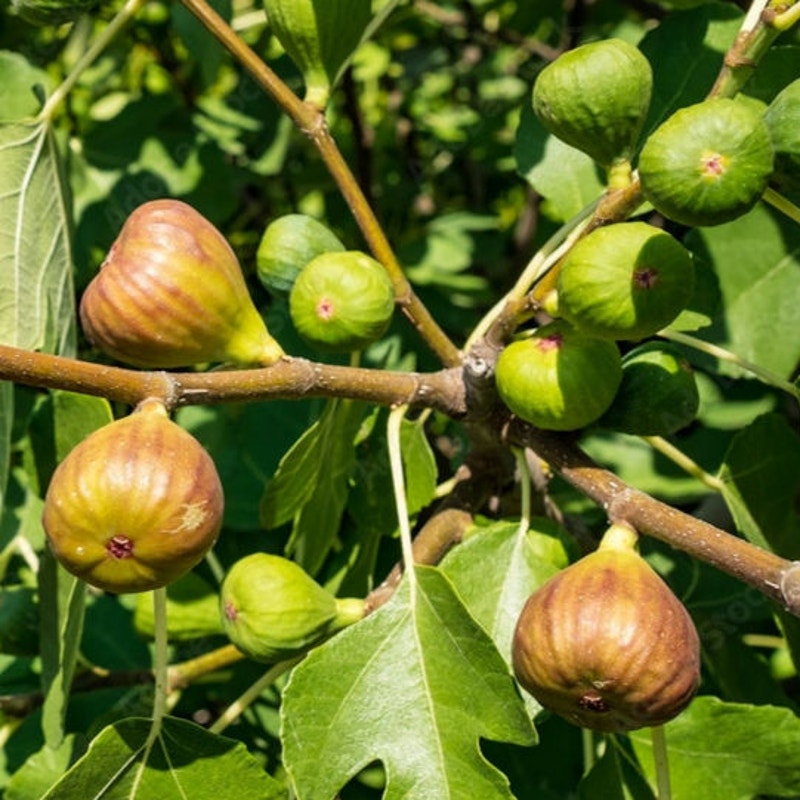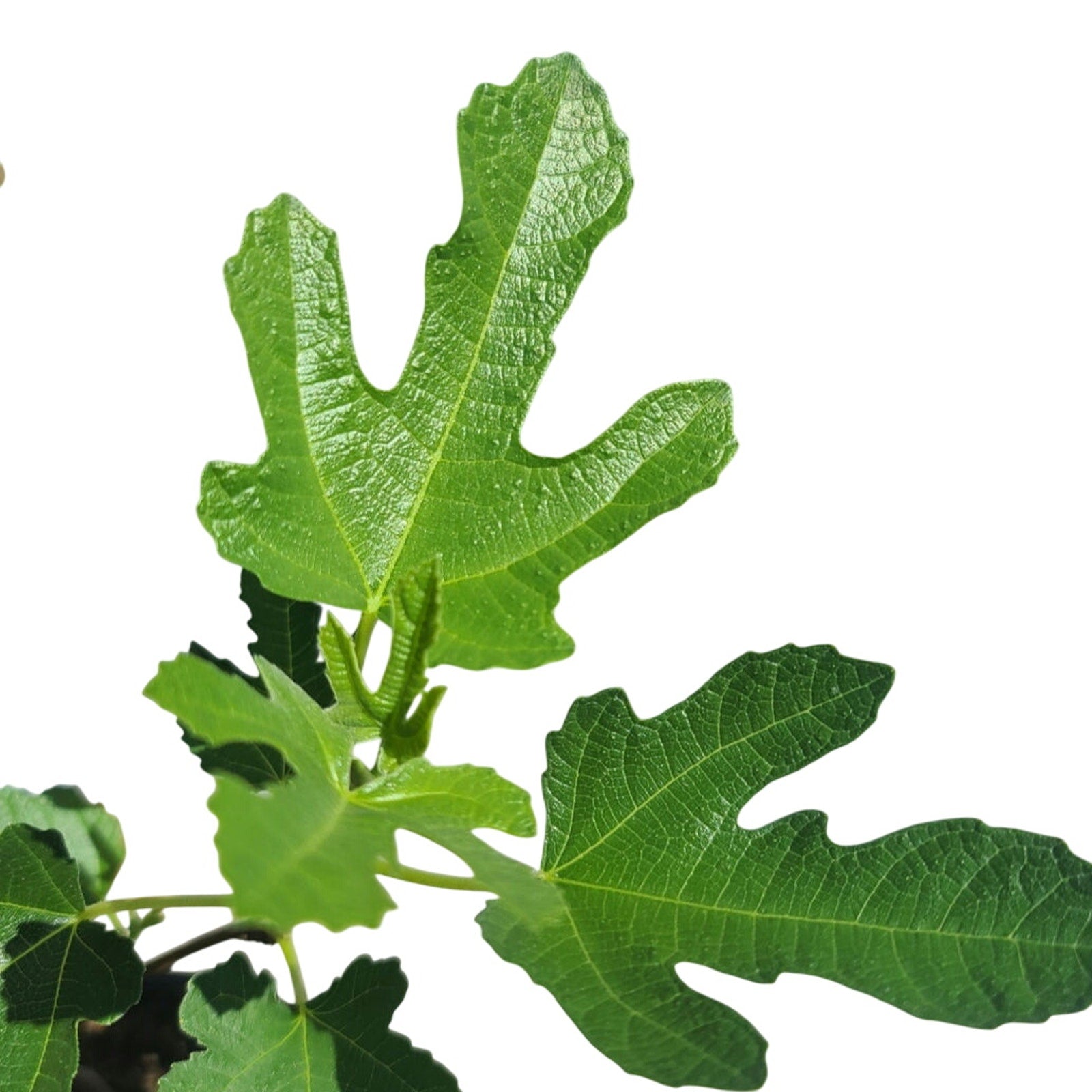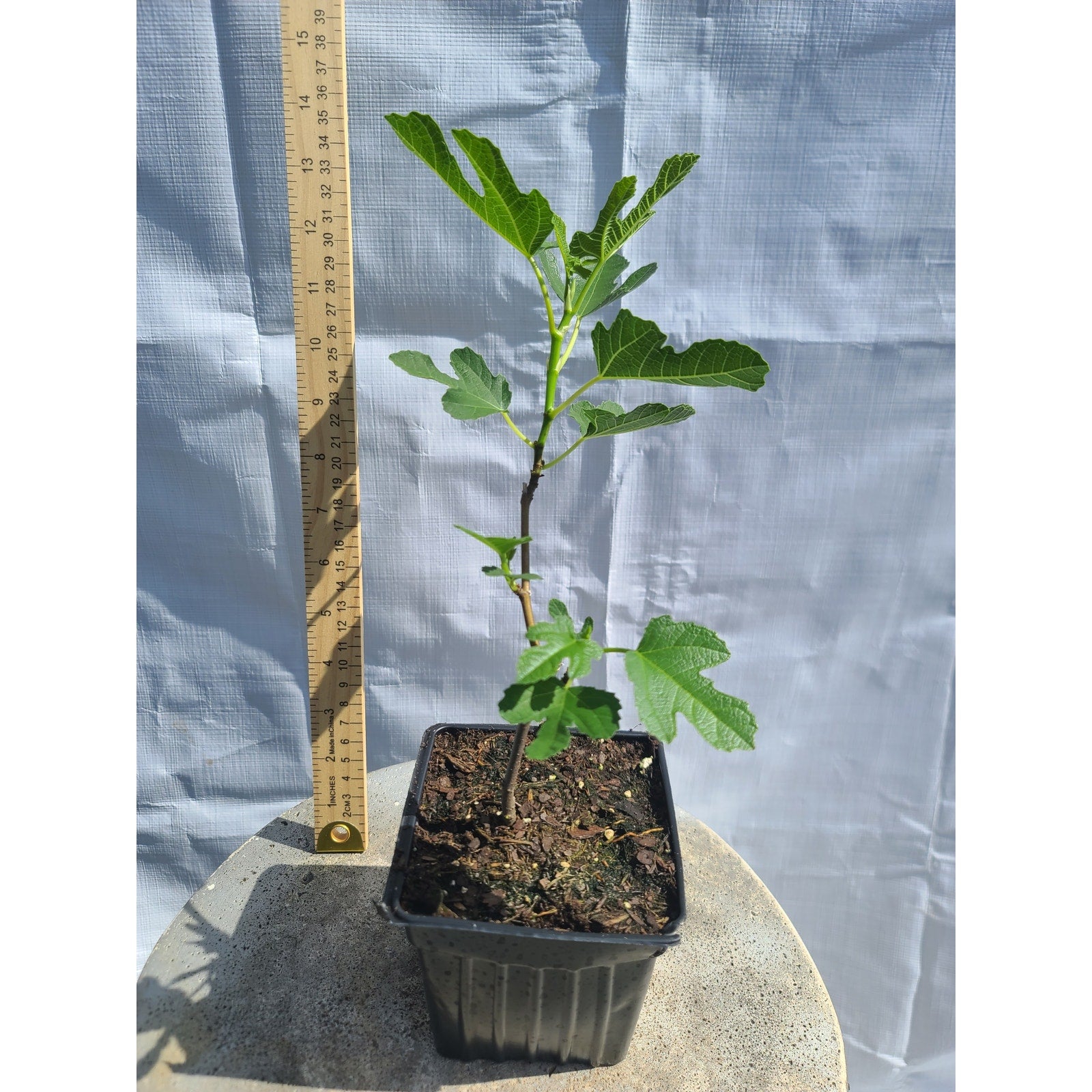1
/
of
3
Fun Coast Plant Nursery
Olympian Fig Tree (Ficus carica 'Olympian') Live Plant Quart Pot
Olympian Fig Tree (Ficus carica 'Olympian') Live Plant Quart Pot
Regular price
$19.99 USD
Regular price
$0.00 USD
Sale price
$19.99 USD
Unit price
/
per
Shipping calculated at checkout.
Couldn't load pickup availability
Olympian Fig
Scientific Name: Ficus carica 'Olympian'
Common Name: Olympian Fig
Plant Type: Deciduous Fruit Tree
Family: Moraceae
Overview:
The Olympian Fig (Ficus carica 'Olympian') is a cold-hardy, high-yielding variety of common fig known for its exceptionally sweet, large fruits with purple to violet skin and rich red flesh. This fig tree is ideal for both backyard growers and edible landscapers due to its compact size, abundant fruiting, and adaptability to cooler climates. The Olympian Fig is well-suited to USDA zones 6–10, making it one of the best figs for gardeners in temperate regions.
Origin and Ecosystem:
Originally discovered in Olympia, Washington, the Olympian Fig is a cultivar bred for cold tolerance and fruit productivity in the Pacific Northwest. Like other fig trees, it thrives in Mediterranean-type climates but stands out for its ability to survive colder winters. In the garden, figs contribute to biodiversity by attracting bees, birds, and small mammals that enjoy the fruit and shelter provided by the tree.
Cultural and Historical Significance:
Figs have been cultivated for over 5,000 years, with roots in the Middle East and Mediterranean regions. Symbolic of abundance, wisdom, and prosperity, figs have held religious and culinary significance throughout history. The Olympian variety adds a modern twist to this ancient fruit, with a focus on flavor, productivity, and resilience in diverse climates.
Ecosystem Contribution:
The Olympian Fig supports local ecosystems by providing nectar for pollinators and fruit for wildlife. Though common figs are parthenocarpic (do not require pollination to produce fruit), their flowers still offer value to bees. Fallen fruits may feed birds, squirrels, and other animals, making this tree a beneficial element of a wildlife-friendly landscape.
Global Adaptation:
The Olympian Fig thrives in temperate, Mediterranean, and subtropical regions, and can adapt to container culture in colder zones. It is notably hardy down to 10°F (-12°C) and may be grown outdoors in zones 6–10. In cooler climates, it can be pruned back and mulched heavily, or grown in pots and overwintered indoors.
Mature Size:
Height: 8 to 10 feet (2.4 to 3 meters)
Spread: 6 to 8 feet (1.8 to 2.4 meters)
Growth Rate: Moderate
Light Requirements:
Full sun. The Olympian Fig requires 6–8 hours of sunlight daily to ensure the production of large, sweet fruits. In shadier locations, growth and yield may be reduced.
Watering Needs:
Low to Moderate. Figs are drought-tolerant once established, but benefit from regular watering during fruit development. Ensure soil is well-drained to prevent root rot. Deep watering is recommended during dry periods.
Soil Requirements:
Prefers well-drained, loamy to sandy soil
Tolerates poor or rocky soil conditions
Soil pH: Slightly acidic to neutral (6.0–7.5)
Mulch to conserve moisture and regulate temperature
Foliage and Flowers:
Leaves:
Large, deeply lobed, tropical-looking green leaves
Deciduous; drops foliage in late fall
Flowers:
Figs produce inconspicuous internal flowers within the fruit (technically an inverted flower structure called a syconium)
Self-fruitful – does not require pollinators
Fruit:
Large, squat fruits with thin purple to violet skin
Deep red to pink inner flesh, very sweet and flavorful
Fruits ripen in early to mid-summer, with potential for a second crop in warmer climates
Excellent for fresh eating, drying, baking, or preserves
Seasonal Interest:
Spring: Leaf emergence and early fruit development
Summer: Main harvest period; decorative foliage and fruit display
Fall: Late harvest in warmer zones, leaf drop as weather cools
Winter: Bare structure adds textural interest to dormant landscapes
Care Instructions:
Fertilizing:
Feed in early spring with a balanced fertilizer (e.g., 10-10-10) or compost
Avoid high-nitrogen fertilizers, which can encourage excessive foliage over fruit
Pruning:
Prune in late winter or early spring to remove dead wood and shape tree
Can be pruned to maintain compact size for containers or small spaces
Pests/Diseases:
Generally pest-resistant but may attract aphids, mealybugs, and scale insects
Birds may feed on ripening fruit—use netting if needed
Susceptible to root rot in poorly drained soils
Mulching:
Mulch in spring to retain soil moisture and insulate roots
In colder climates, apply thick mulch in late fall to protect from winter cold
Uses in the Landscape:
Edible Gardens & Orchards: Excellent choice for homegrown fruit production
Containers: Ideal for pots in colder regions—can be moved indoors for winter
Urban Gardens: Compact form suits small yards and patio gardens
Specimen Tree: Distinctive foliage and fruit make it a focal point in landscape designs
Wildlife Habitat: Provides food and habitat for birds and pollinators
Hardiness Zone:
USDA Zones 6–10. One of the most cold-hardy fig varieties, able to withstand occasional freezing temperatures. Protect in zone 6 with mulch or container culture.
Special Features:
✔ Cold Hardy – Thrives in cooler climates where many figs struggle
✔ Sweet, Large Fruit – Excellent flavor and size for fresh or preserved use
✔ Compact Growth – Perfect for small gardens and container growing
✔ Low Maintenance – Drought-tolerant and pest-resistant
✔ Ornamental Foliage – Bold, tropical-looking leaves
The Olympian Fig is a standout performer in both taste and toughness. With its rich, sweet fruit and tolerance for cooler climates, it’s a must-have for gardeners seeking a low-maintenance, productive fruit tree. Whether grown in the ground or in a container, this fig delivers beauty, flavor, and resilience.
Scientific Name: Ficus carica 'Olympian'
Common Name: Olympian Fig
Plant Type: Deciduous Fruit Tree
Family: Moraceae
Overview:
The Olympian Fig (Ficus carica 'Olympian') is a cold-hardy, high-yielding variety of common fig known for its exceptionally sweet, large fruits with purple to violet skin and rich red flesh. This fig tree is ideal for both backyard growers and edible landscapers due to its compact size, abundant fruiting, and adaptability to cooler climates. The Olympian Fig is well-suited to USDA zones 6–10, making it one of the best figs for gardeners in temperate regions.
Origin and Ecosystem:
Originally discovered in Olympia, Washington, the Olympian Fig is a cultivar bred for cold tolerance and fruit productivity in the Pacific Northwest. Like other fig trees, it thrives in Mediterranean-type climates but stands out for its ability to survive colder winters. In the garden, figs contribute to biodiversity by attracting bees, birds, and small mammals that enjoy the fruit and shelter provided by the tree.
Cultural and Historical Significance:
Figs have been cultivated for over 5,000 years, with roots in the Middle East and Mediterranean regions. Symbolic of abundance, wisdom, and prosperity, figs have held religious and culinary significance throughout history. The Olympian variety adds a modern twist to this ancient fruit, with a focus on flavor, productivity, and resilience in diverse climates.
Ecosystem Contribution:
The Olympian Fig supports local ecosystems by providing nectar for pollinators and fruit for wildlife. Though common figs are parthenocarpic (do not require pollination to produce fruit), their flowers still offer value to bees. Fallen fruits may feed birds, squirrels, and other animals, making this tree a beneficial element of a wildlife-friendly landscape.
Global Adaptation:
The Olympian Fig thrives in temperate, Mediterranean, and subtropical regions, and can adapt to container culture in colder zones. It is notably hardy down to 10°F (-12°C) and may be grown outdoors in zones 6–10. In cooler climates, it can be pruned back and mulched heavily, or grown in pots and overwintered indoors.
Mature Size:
Height: 8 to 10 feet (2.4 to 3 meters)
Spread: 6 to 8 feet (1.8 to 2.4 meters)
Growth Rate: Moderate
Light Requirements:
Full sun. The Olympian Fig requires 6–8 hours of sunlight daily to ensure the production of large, sweet fruits. In shadier locations, growth and yield may be reduced.
Watering Needs:
Low to Moderate. Figs are drought-tolerant once established, but benefit from regular watering during fruit development. Ensure soil is well-drained to prevent root rot. Deep watering is recommended during dry periods.
Soil Requirements:
Prefers well-drained, loamy to sandy soil
Tolerates poor or rocky soil conditions
Soil pH: Slightly acidic to neutral (6.0–7.5)
Mulch to conserve moisture and regulate temperature
Foliage and Flowers:
Leaves:
Large, deeply lobed, tropical-looking green leaves
Deciduous; drops foliage in late fall
Flowers:
Figs produce inconspicuous internal flowers within the fruit (technically an inverted flower structure called a syconium)
Self-fruitful – does not require pollinators
Fruit:
Large, squat fruits with thin purple to violet skin
Deep red to pink inner flesh, very sweet and flavorful
Fruits ripen in early to mid-summer, with potential for a second crop in warmer climates
Excellent for fresh eating, drying, baking, or preserves
Seasonal Interest:
Spring: Leaf emergence and early fruit development
Summer: Main harvest period; decorative foliage and fruit display
Fall: Late harvest in warmer zones, leaf drop as weather cools
Winter: Bare structure adds textural interest to dormant landscapes
Care Instructions:
Fertilizing:
Feed in early spring with a balanced fertilizer (e.g., 10-10-10) or compost
Avoid high-nitrogen fertilizers, which can encourage excessive foliage over fruit
Pruning:
Prune in late winter or early spring to remove dead wood and shape tree
Can be pruned to maintain compact size for containers or small spaces
Pests/Diseases:
Generally pest-resistant but may attract aphids, mealybugs, and scale insects
Birds may feed on ripening fruit—use netting if needed
Susceptible to root rot in poorly drained soils
Mulching:
Mulch in spring to retain soil moisture and insulate roots
In colder climates, apply thick mulch in late fall to protect from winter cold
Uses in the Landscape:
Edible Gardens & Orchards: Excellent choice for homegrown fruit production
Containers: Ideal for pots in colder regions—can be moved indoors for winter
Urban Gardens: Compact form suits small yards and patio gardens
Specimen Tree: Distinctive foliage and fruit make it a focal point in landscape designs
Wildlife Habitat: Provides food and habitat for birds and pollinators
Hardiness Zone:
USDA Zones 6–10. One of the most cold-hardy fig varieties, able to withstand occasional freezing temperatures. Protect in zone 6 with mulch or container culture.
Special Features:
✔ Cold Hardy – Thrives in cooler climates where many figs struggle
✔ Sweet, Large Fruit – Excellent flavor and size for fresh or preserved use
✔ Compact Growth – Perfect for small gardens and container growing
✔ Low Maintenance – Drought-tolerant and pest-resistant
✔ Ornamental Foliage – Bold, tropical-looking leaves
The Olympian Fig is a standout performer in both taste and toughness. With its rich, sweet fruit and tolerance for cooler climates, it’s a must-have for gardeners seeking a low-maintenance, productive fruit tree. Whether grown in the ground or in a container, this fig delivers beauty, flavor, and resilience.
Share
